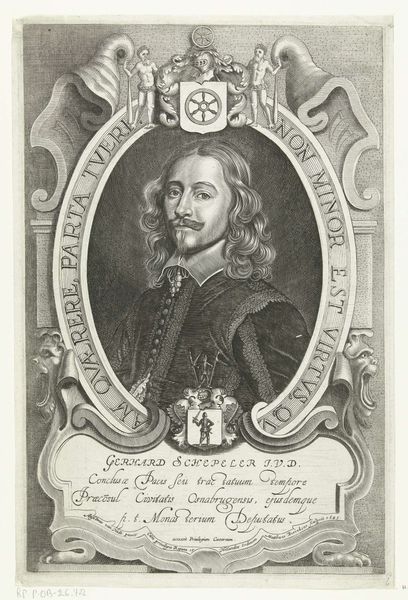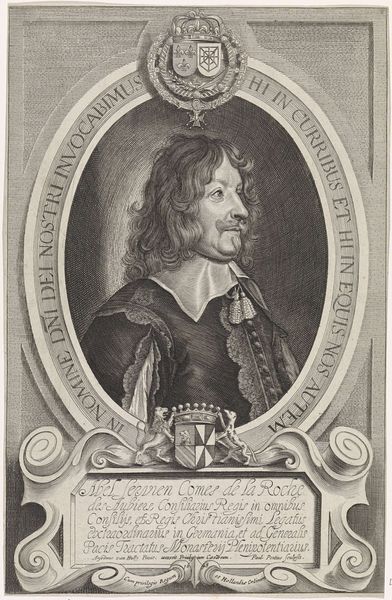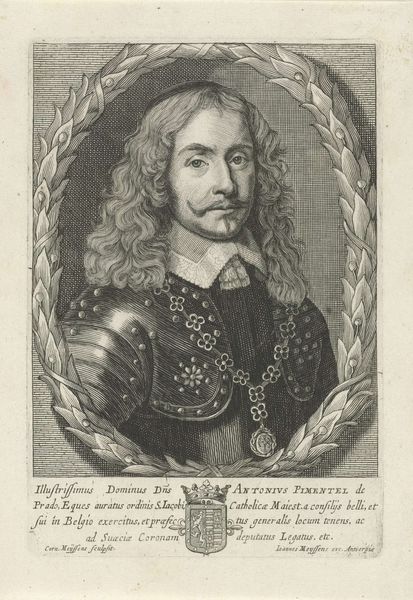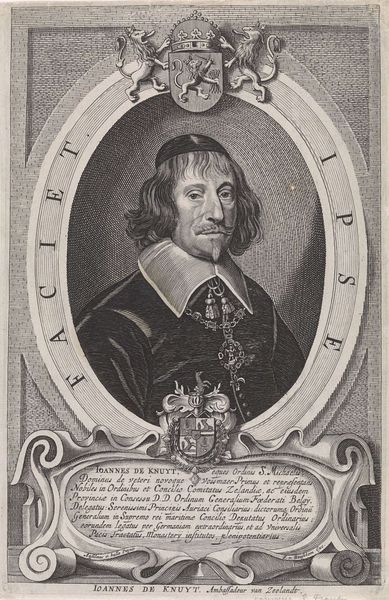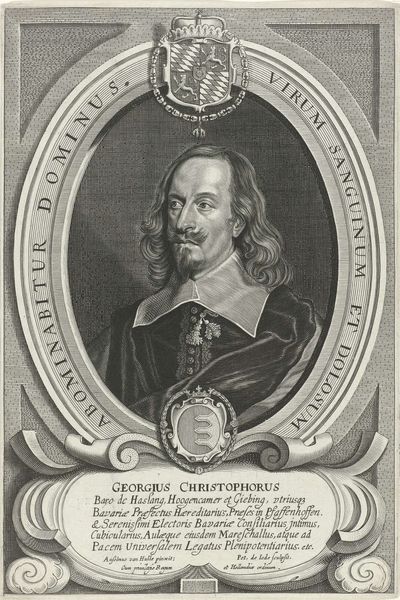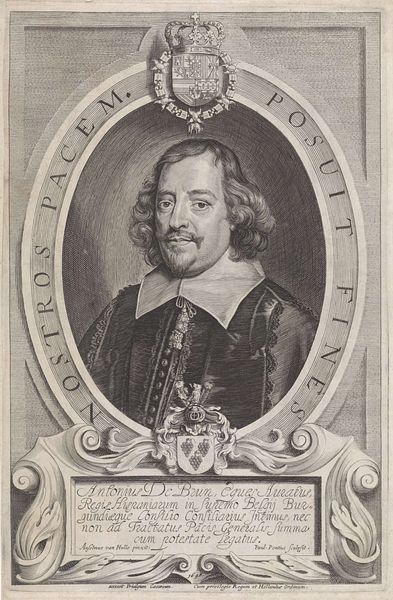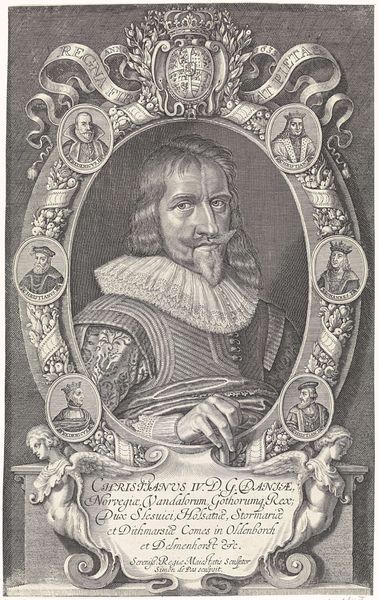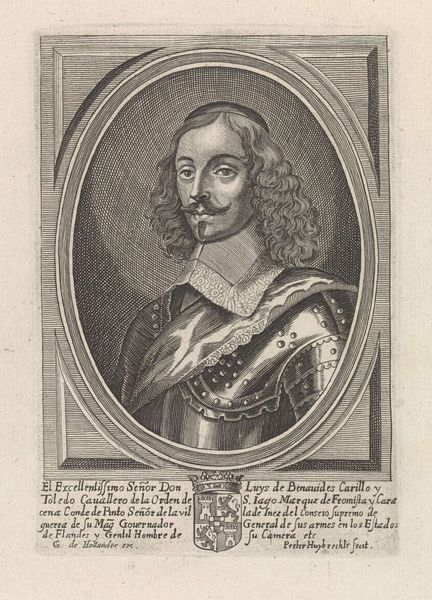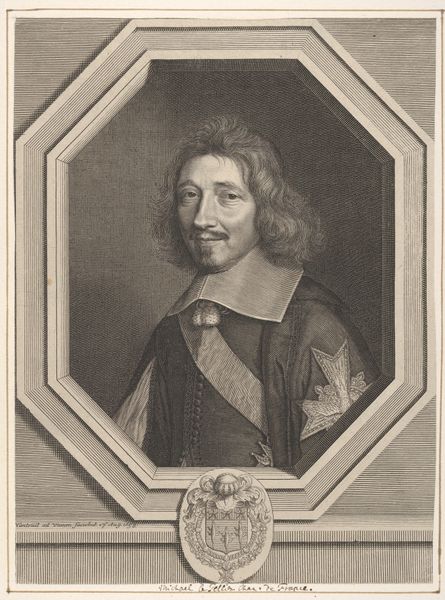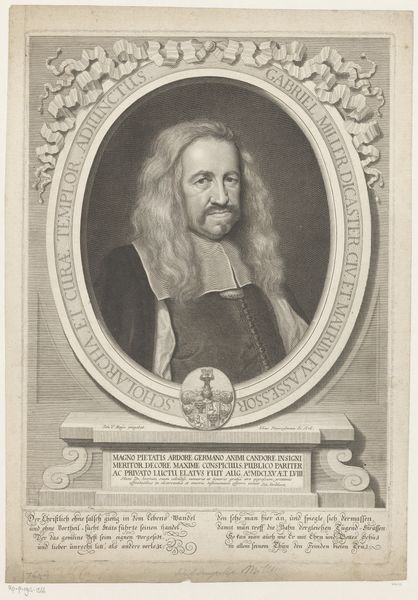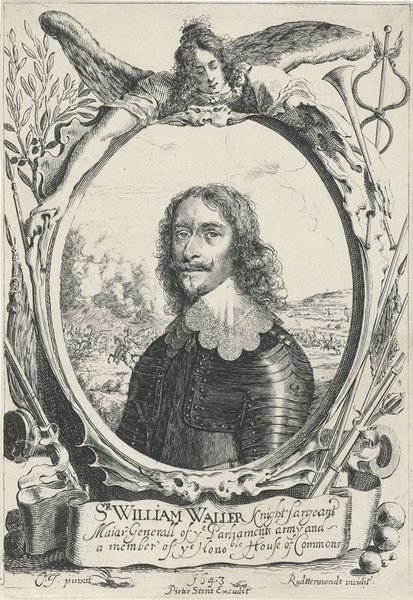
engraving
#
portrait
#
medieval
#
baroque
#
line
#
history-painting
#
engraving
Dimensions: height 296 mm, width 196 mm
Copyright: Rijks Museum: Open Domain
Curator: Immediately, what strikes me is the intense formality, and the stillness, almost like a mask. The gentleman stares out, surrounded by dense ornamentation; the mood is weighty. Editor: That's certainly true. This engraving from 1648, entitled "Portret van Johann Konrad Varnbüler", presents us with the image of a man who held a position of some standing, serving as secretary to the Prince of Württemberg, and also legate at the peace treaties. The portrait, currently held at the Rijksmuseum, is crafted by Coenraet Waumans. Curator: Yes, that sense of power is very palpable! The Latin inscription, "Patientia Pax Firma," loops around the subject, connecting to ideas about stability and composure—a sort of visual program. I’m intrigued by that interplay of personal image and cultural symbolism. Editor: And considering the date, just as the Thirty Years War was drawing to a close with the Treaty of Westphalia, the desire for peace would have been extremely profound, a hope manifested and promoted. You see it echoed in the symbolic order too. The two crests presented in this engraving offer us an insight into this individual's heritage and perhaps ambitions. Curator: Right. Look how they function as visual anchors! They really speak to how much of personal identity in that era was intrinsically linked to familial status, and a grander inherited narrative. Each element, from the coat of arms down to the flowing text, carries a heavy, conscious symbolic weight. The eye gazes upwards to these crests; we're presented with the hope for order, a desire to consolidate power after the throes of a grueling and extended conflict. Editor: Certainly. I think that is the power of this genre during this period in history. And Waumans' engraving provides a remarkable demonstration of it, effectively projecting the subject's character through symbolism and design, beyond mere physical resemblance. Curator: So in a sense, it shows how portraits moved beyond just capturing likeness—they constructed an entire image based on the subject’s place within society’s broader structures and cultural narratives. The symbols and textual annotations here become inseparable from the person presented. Editor: Absolutely. Understanding that helps us unpack not just who Varnbüler was, but the specific historical moment and cultural values he embodied. Curator: And perhaps it leaves us considering: in our era so awash with imagery, what symbols define our own projections of self?
Comments
No comments
Be the first to comment and join the conversation on the ultimate creative platform.

